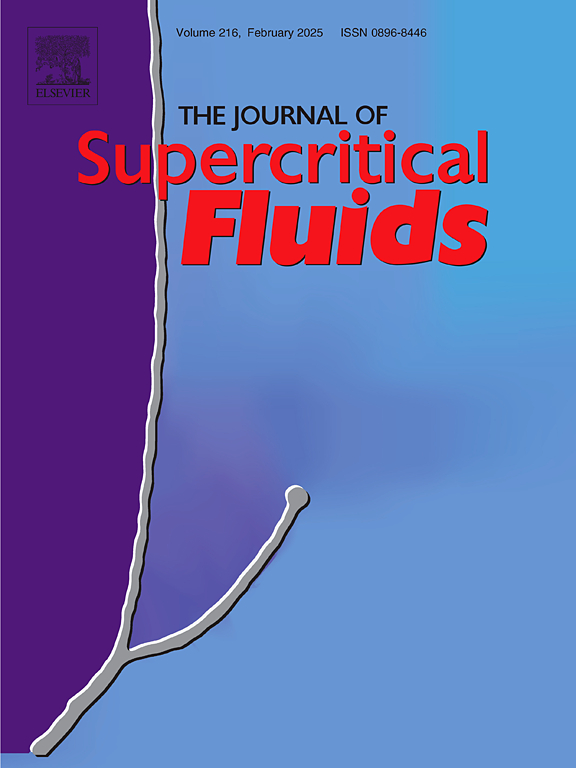Preparation of hesperetin-polyvinylpyrrolidone sub-microparticles by supercritical anti-solvent technique for improved anti-cancer efficiency
IF 3.4
3区 工程技术
Q2 CHEMISTRY, PHYSICAL
引用次数: 0
Abstract
The poor water solubility of hesperetin (HST) has impeded its relevant medical applications. To address this problem, the supercritical anti-solvent (SAS) technique was used to prepare HST-polyvinylpyrrolidone (HST-PVP) sub-microparticles. Additionally, the Box-Behnken Design was used to optimize three parameters (temperature, total solute concentration, and pressure) to determine the optimal process conditions, which were determined to be 40 ℃, 5 mg/mL, and 100 bar. The physicochemical properties, drug release, and in vitro anti-cancer efficacy of the designed particles under the optimal conditions were systematically investigated. The drug loading of HST in HST-PVP sub-microparticles was quantified at 12.73 %. The dissolution rate of SAS-treated HST-PVP sub-microparticles was significantly enhanced compared to that of pure HST, leading to a higher anti-cancer efficiency of the HST-PVP sub-microparticles than that of pure HST. These findings indicate that the SAS technique holds significant potential for enhancing the bioavailability of hydrophobic drugs.
超临界抗溶剂技术制备橙皮苷-聚乙烯吡咯烷酮亚微粒,提高抗癌效果
橙皮苷(HST)的水溶性较差,阻碍了其相关的医学应用。为了解决这一问题,采用超临界反溶剂(SAS)技术制备了hst -聚乙烯吡咯烷酮(HST-PVP)亚微粒。此外,采用Box-Behnken设计法对温度、总溶质浓度、压力3个参数进行优化,确定最佳工艺条件为40 ℃、5 mg/mL、100 bar。在最佳条件下,系统考察了所设计颗粒的理化性质、药物释放及体外抗癌效果。HST- pvp亚微粒中HST的载药量为12.73 %。经sas处理的HST- pvp亚微粒的溶出率较纯HST显著提高,从而使HST- pvp亚微粒的抗癌效率高于纯HST。这些发现表明,SAS技术在提高疏水药物的生物利用度方面具有重要的潜力。
本文章由计算机程序翻译,如有差异,请以英文原文为准。
求助全文
约1分钟内获得全文
求助全文
来源期刊

Journal of Supercritical Fluids
工程技术-工程:化工
CiteScore
7.60
自引率
10.30%
发文量
236
审稿时长
56 days
期刊介绍:
The Journal of Supercritical Fluids is an international journal devoted to the fundamental and applied aspects of supercritical fluids and processes. Its aim is to provide a focused platform for academic and industrial researchers to report their findings and to have ready access to the advances in this rapidly growing field. Its coverage is multidisciplinary and includes both basic and applied topics.
Thermodynamics and phase equilibria, reaction kinetics and rate processes, thermal and transport properties, and all topics related to processing such as separations (extraction, fractionation, purification, chromatography) nucleation and impregnation are within the scope. Accounts of specific engineering applications such as those encountered in food, fuel, natural products, minerals, pharmaceuticals and polymer industries are included. Topics related to high pressure equipment design, analytical techniques, sensors, and process control methodologies are also within the scope of the journal.
 求助内容:
求助内容: 应助结果提醒方式:
应助结果提醒方式:


